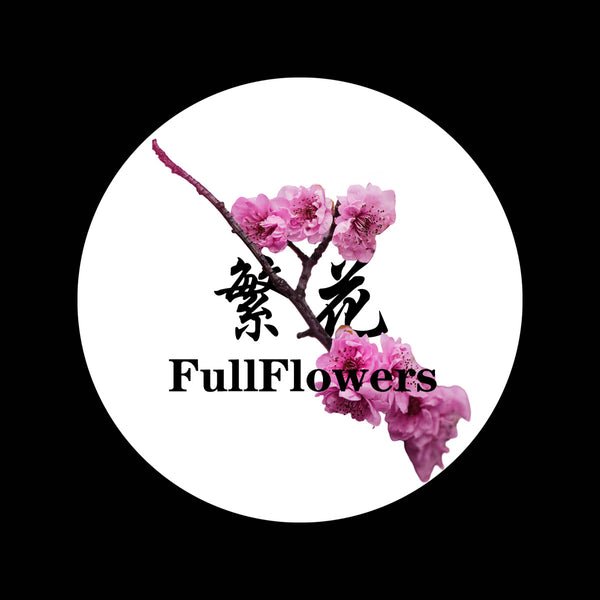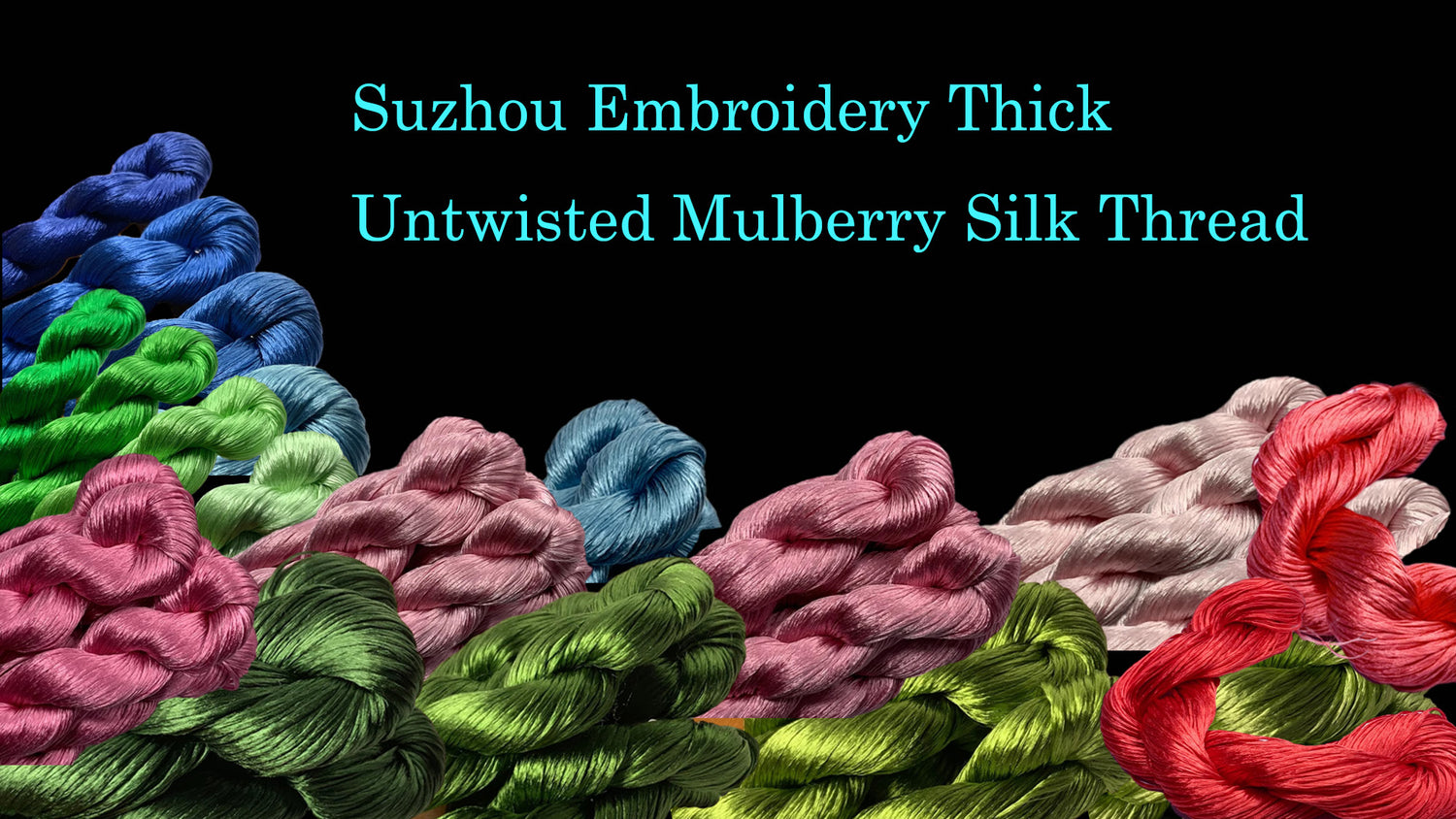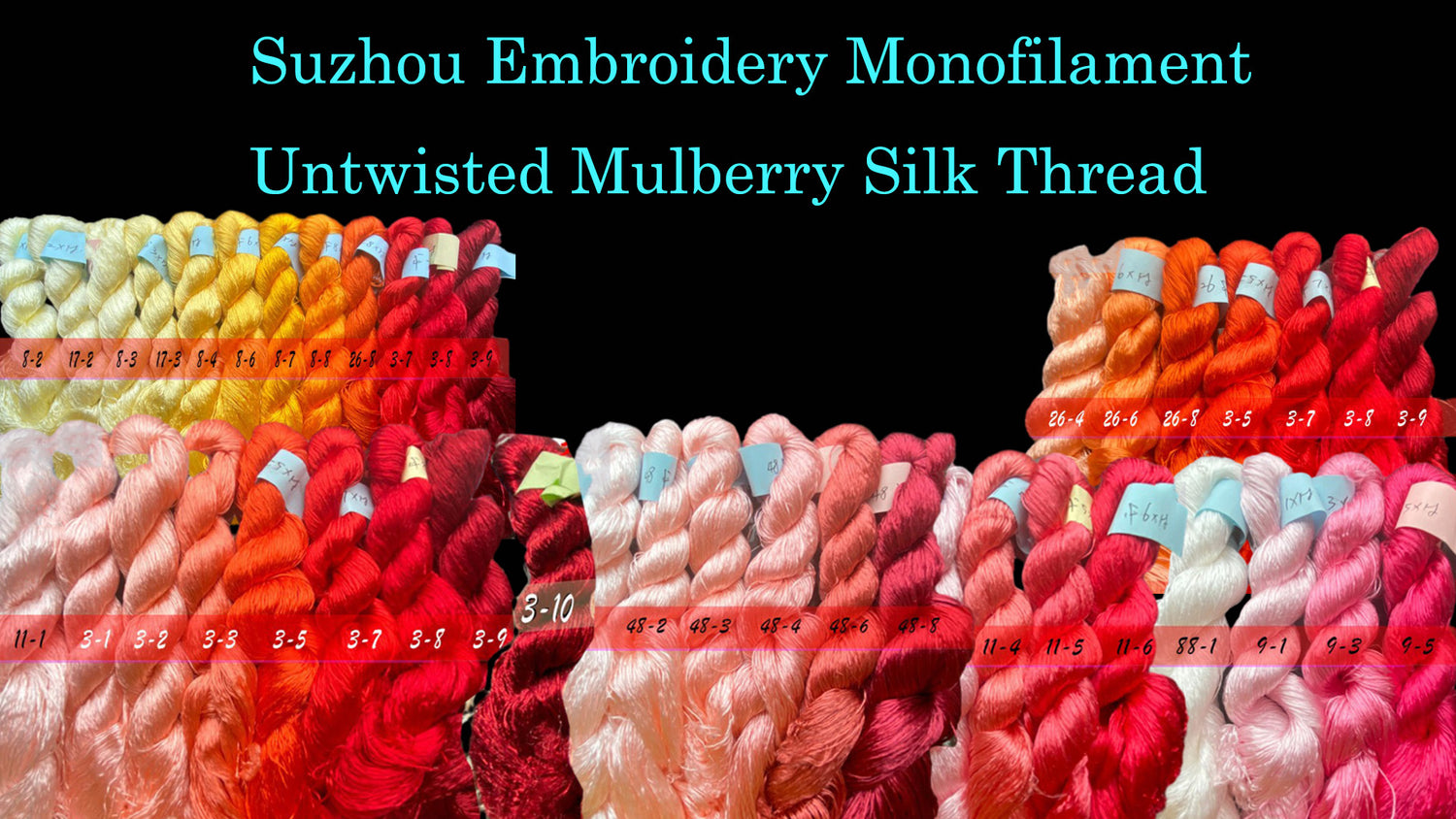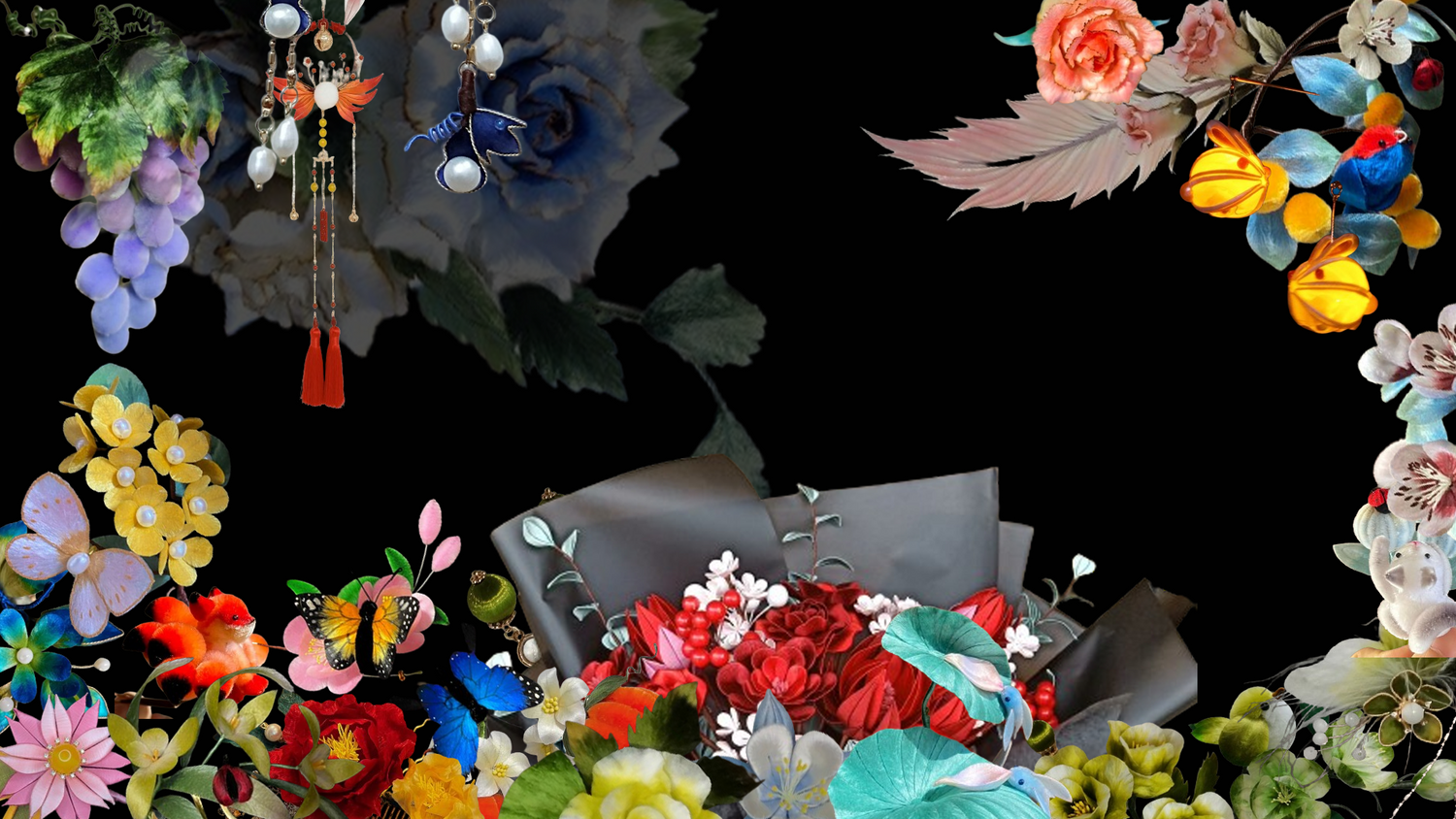
Materials and Tools Preparation - Handcraft Ronghua Tutorial
Share
A. Threads
Making Ronghua can be done using either ordinary silk threads or more advanced silk threads. Naturally, using higher-grade silk threads results in better finished products, but the cost is higher. Choose according to your preference.

- 1.Hunan Embroidery Thread: Hunan embroidery thread is thicker and easy to extract, but some kinds of Hunan embroidery threads have harder texture so that it's difficult to split.
- 2.Untwisted Thread: Untwisted threads do not require splitting and are easy to extract. Once fixed, they can be combed directly. However, the colors available for untwisted threads are not as rich as those for Suzhou embroidery threads, and they are also more expensive.
- 3.Suzhou Embroidery Thread: Suzhou embroidery thread is inexpensive and comes in a wide range of colors. After combing, it has a plush texture. However, splitting it is time-consuming, and during combing, the ends easily curl, tangle, and the density of the velvet might not be even.
 Gradient-Dyed Thread
Gradient-Dyed Thread
Gradient-dyed threads have several colors along their length, creating velvety sections of different colors, resulting in more colorful velvet strips.
 Raw Silk
Raw Silk
Raw silk refers to silk threads that have not been degummed. It is like hair strands, distinct and somewhat hard, making it suitable for creating pom-poms.
 Refined Silk
Refined Silk
Refined silk refers to silk threads that have been degummed by boiling. Although refined silk can be used to make Ronghua, it is difficult to separate and, once unfolded, resembles a fishing net, making it unsuitable for beginners.
Tips:
- 1. Both Hunan embroidery thread and Suzhou embroidery thread are composed of two strands combined into one, thus requiring splitting. Untwisted thread consists of a single strand and does not require splitting.
- 2. The quality and price of silk threads vary, with untwisted thread being the most expensive, followed by Hunan embroidery thread, and Suzhou embroidery thread being the least expensive.
B. Brass Wires
Brass wire is needed for making Ronghua. Brass or red copper wire is required for making velvet strips, while color-retaining copper wire is needed for making filigree velvet flowers and fixing other components of Ronghua.
Commonly used copper wire diameters include 0.15mm, 0.2mm, 0.25mm, and 0.3mm. The 0.2mm wire is the most commonly used, with 0.15mm for small items and 0.25mm or 0.3mm for larger items. For color-retaining copper wire, common diameters are 0.2mm, 0.3mm, and 0.4mm. The 0.2mm and 0.3mm color-retaining copper wires are recommended for making filigree velvet flowers, while 0.4mm to 0.8mm can be used for making branches.
Brass Wire: Brass wire needs annealing before use due to its hardness and lack of purity. Annealing makes the wire softer and more flexible, making it easier to twist.
Tips for Annealing Brass Wire:
- 1. Coil the brass wire tightly. If it is too loose, it may melt during annealing.
 Effect before annealing
Effect before annealing
- 2. Heat the wire coil until it is uniformly red. If the heat is uneven, use long tweezers to rotate the coil. Let it cool down before use.
 Heat the wire coil Effect after annealing
Heat the wire coil Effect after annealing
 Red Copper Wire
Red Copper Wire
Like brass wire, red copper wire also requires annealing.
Tips for Annealing Red Copper Wire:
- 1. Follow the same steps as for brass wire: coil the wire and heat it.
 Effect before annealing Effect after annealing
Effect before annealing Effect after annealing
- 2. Place the annealed wire in a container with water and some alum.
 Add alum to water and boil
Add alum to water and boil
- 3.Boil it until the wire surface is clean (this may take some time). After boiling, remove the wire, wipe it dry, and let it air dry in a ventilated area.
 Effect after boiling with alum
Effect after boiling with alum
 Color-Retaining Copper Wire
Color-Retaining Copper Wire
Color-Retaining Copper Wire can be used for making branches, stamens, or filigree Ronghua.
C. Tools for Making Velvet Strips
Creating velvet strips is a key step in making Ronghua, requiring various tools.
 Wooden Stick and Clamp
Wooden Stick and Clamp
A wooden stick is used to fix the bottom end of the velvet strip to prevent the silk threads from running loose. The clamp can tightly secure the wooden stick or directly hold the velvet strip on the table. Additionally, the clamp can be used to fix the width of the velvet strip.
 Ruler
Ruler
A ruler is mainly used to measure the width of the velvet strip, ensuring uniform width.
 Scissors
Scissors
Scissors are essential for making Ronghua. The scissors used to cut the velvet strip must have long, sharp blades to prevent the velvet from scattering when cut. It is also necessary to have multiple sharp scissors for tapering the velvet strips.
 Silk Twisting Board Anti-Slip Powder
Silk Twisting Board Anti-Slip Powder
- A silk twisting board is mainly used to twist the silk threads and can be any two flat wooden boards.
- Applying anti-slip powder on your fingers before twisting copper wire can increase friction.
Brushes are primarily used to smooth out the silk threads, commonly using bristle brushes or nano brushes. After combing, the brushes often have many broken silk threads, which can be removed with tweezers by inserting them from the side and pulling the threads out.
D. Tools for Shaping Ronghua
The following tools are needed for shaping Ronghua.
 Tweezers
Tweezers
Tweezers are divided into pointed and round-headed tweezers. Pointed tweezers are mainly used to adjust the curvature and shape of the petals, while round-headed tweezers can be used for shaping copper wire in filigree Ronghua.
 Glue
Glue
The above image shows different types of glue:
- 1. Nail topcoat glue for making water droplets on Ronghua without showing copper wire;
- 2. Fast-drying jewelry glue for fixing beads;
- 3. UV glue, commonly used for making heat-shrink sheets, providing strong adhesion;
- 4. B-7000 glue, often used in making filigree Ronghua;
- 5. White glue, mainly for fixing the petals and reinforcing the branches after tying them.
 Pliers and Scissors
Pliers and Scissors
- 1. Round-nose pliers for adjusting the details of the branches;
- 2. Nylon pliers for bending thicker branches;
- 3. Cutting pliers for trimming copper wires;
- 4. Scissors for cutting auxiliary components like cardstock.
 Shaping Tools
Shaping Tools
For shaping Ronghua, a high-pressure spray hairspray is recommended, or you can mix white glue with water to make a setting solution.
 Clamps
Clamps
Clamps are used when making flat Ronghua. Two types of clamps are needed: narrow curved clamps for special petal shapes, and wide clamps for flattening larger petals.
 Flower Ironing Tool
Flower Ironing Tool
This tool includes a handle and variously sized and shaped ironing heads, used to create curved petals that resemble real flowers. The temperature should be kept between 140℃ and 180℃ to avoid discoloring light-colored petals.
 Velvet Threads
Velvet Threads
Velvet threads are used to tie flower branches. High-gloss velvet threads, although shiny, lack elasticity and can slip easily, while ordinary velvet threads are more suitable for beginners and can be selected based on the required color.
 Paints
Paints
After making Ronghua, different types of paints can be used to decorate it, making it more beautiful, luxurious, and creative. The above image shows:
- 1. Visuart watercolor paints;
- 2. Pearl powder;
- 3. Solid pearlescent watercolor paints;
- 4. Faber-Castell solid watercolor paints;
- 5. Golden and silver inks from Yunjige.
 Sponge and Silicone Mats
Sponge and Silicone Mats
A sponge mat is used for inserting half-finished Ronghua petals. Because Ronghua copper wires are very thin, a regular sponge mat is too hard, so a nano sponge mat is recommended. The silicone mat is used on top of the sponge mat when shaping flat Ronghua petals for better handling.









